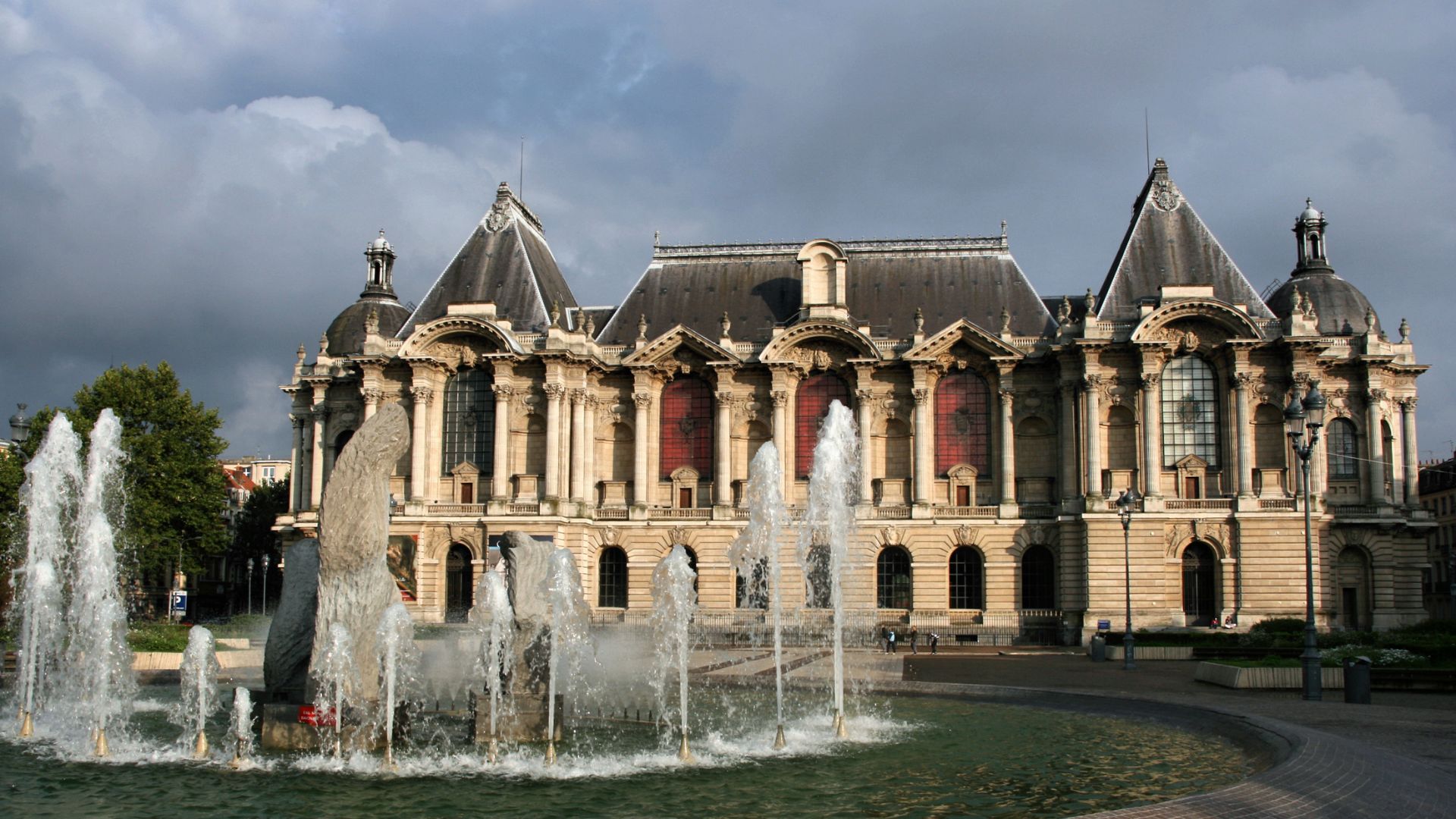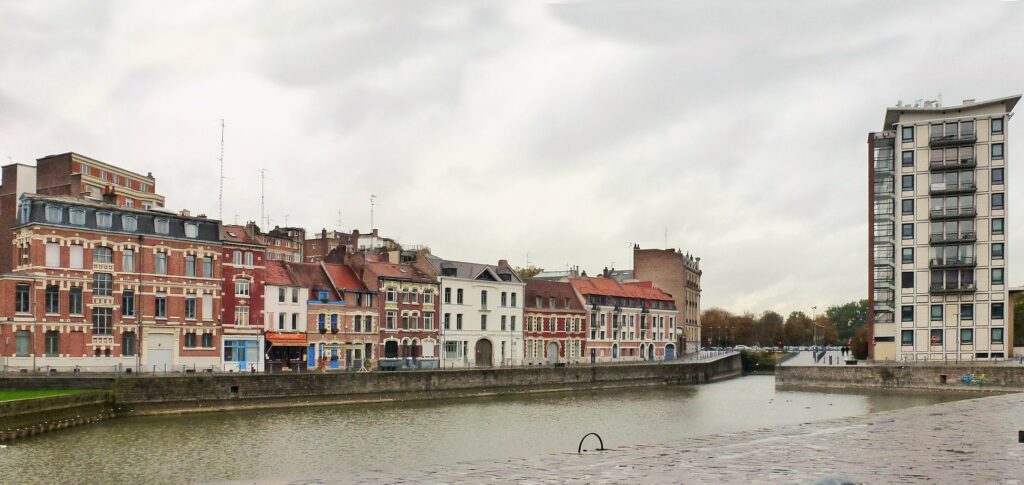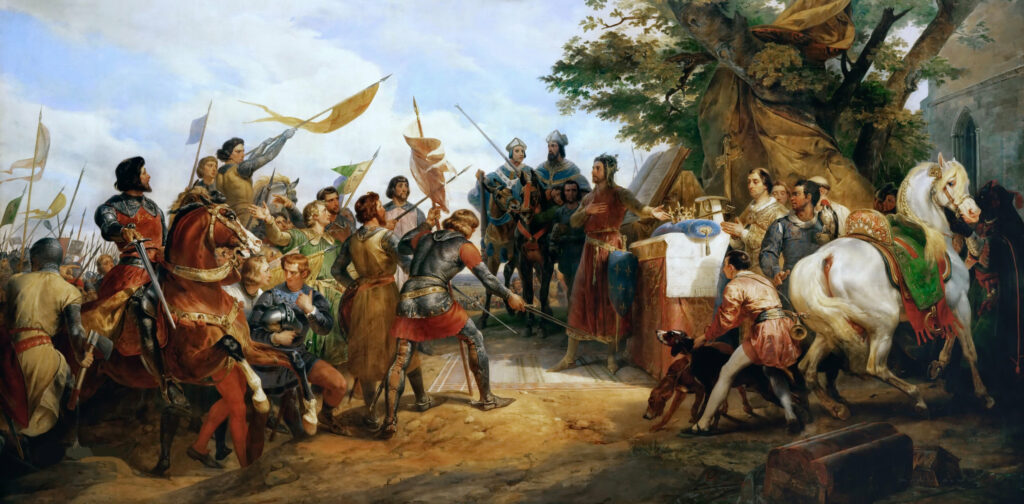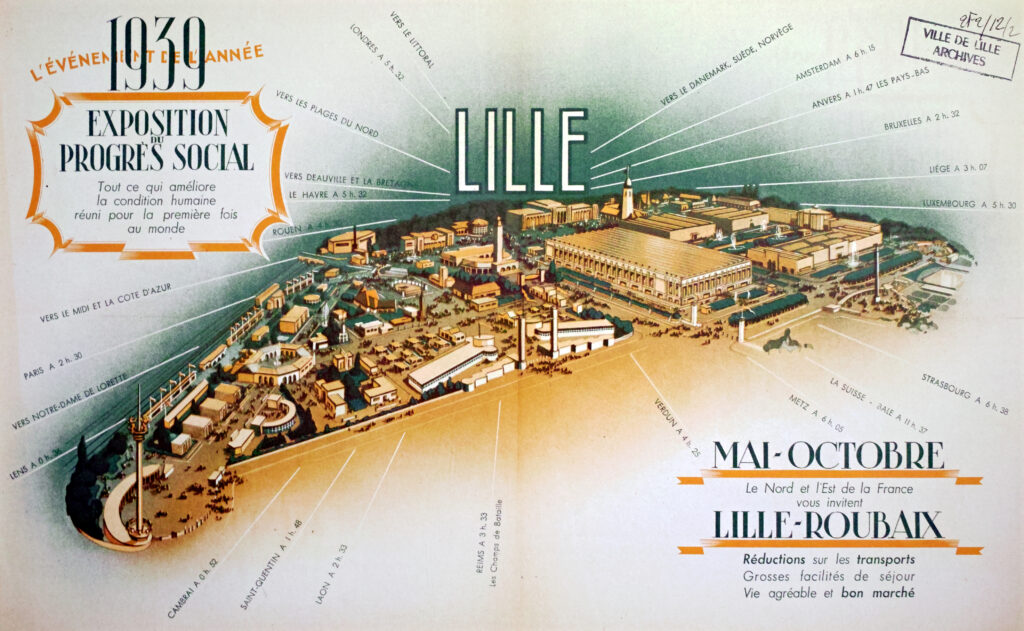
All about the history of Lille
You’re coming to Lille soon? It’s time to learn more about the famous capital of Flanders!
Knowing the history of a city has several advantages:
- Better understand local culture and traditions
- Appreciate heritage with an enlightened eye
- Strengthen intercultural links and better integrate into the local community
By looking at its past, you will better understand what shaped the identity of the city of Lille!
Lille in the Middle Ages
to the origins

Quai du Wault, ancien port de Lille – PIERRE ANDRE LECLERCQ, CC BY-SA 4.0 https://creativecommons.org/licenses/by-sa/4.0, via Wikimedia Commons
In the 11th century, the first mentions of the city of Lille, then called “isla” in Latin or “L’isle” in old French, appear in the writings. This name directly evokes its link with water, highlighting its geographical origin near the Deûle.
In its early years, Lille was limited to a port and a few dwellings. However, its strategic position on the banks of the Deûle, an important waterway between the major Flemish cities and the fairs of Champagne, The European Commission has been instrumental in its further development. This port played a crucial role in the transfer of goods between different sections of the river, facilitating trade within the region.
At the end of the 10th century, Lille was not yet a city, but it was already growing rapidly.
A coveted territory
When it emerged, Lille was part of the county of Flanders, one of the most prosperous regions in Europe at that time. The population of Lille was probably around 30,000 in the mid-13th century, a growth due to an exceptional economic boom: The city becomes the main regional market and its annual fair attracts traders from all over Europe. Thus, the economy of Lille developed around various commercial activities, such as textiles, drapery, crafts and wool trade.
Because of its wealth, but also its political and military role, due to its border position, Lille is very coveted. As a result, it suffered several sieges in the course of its history. In 1213, the city suffered its first siege by Philippe Auguste, first king of France, under the reason that it is attached to the counts of Flanders, Which is considered a betrayal by him.
The counts of Flanders, Boulogne, Hainaut, England and the Holy German Empire then allied themselves and declared war on France. The conflict ended in 1214, with the victory of Bouvines. Lille was then ruled by Joan of Flanders, whose husband, Ferdinand of Portugal, Count of Flanders, had been captured. She built the building that became the Hospice Comtesse and she greatly contributed to the development of the city. Lille was under the tutelage of France from 1304 to 1369.

Horace Vernet, Battle of Bouvines, 27 July 1214
In 1369, the heiress of the county, Marguerite de Mâle, married the Duke of Burgundy, Philippe le Hardi, which made Lille pass into the hands of the Duchy of Burgundy. It then gains even more importance by hosting a chamber of accounts and a court of justice, and becoming the theater of celebrations that have marked memories, such as the banquet of the pheasant. It is a prosperous time for the city.
By the alliance of Marie de Bourgogne, heiress to the duchy, and Maximilien, son of the Austrian emperor and future emperor of the Holy German Empire, in 1477, Lille was ceded to the Habsburgs, The European Parliament is one of the most important sovereign houses in Europe.
Thus, throughout the Middle Ages, Lille was under the direction of multiple spheres of power and its importance only grew.
XVI-XVIII: Lille under Spanish domination
The descendant of Mary of Burgundy and Maximilian of Austria, the great Charles V (or Carlos I for the Spanish), inherited in 1506 a very vast empire including the Germanic Empire, the Netherlands and the Kingdom of Spain. The county of Flanders is thus under the tutelage of the emperor.
The end of Charles V’s reign saw Spanish Flanders returned to his son, Philip II, King of Spain. During the 16th century, Lille greatly developed the influence of its textile industry in the region, but it also suffered several crises, such as epidemics of plague, Protestant revolts or popular uprisings against Spanish rule.
In 1598, the Spanish Netherlands was ceded by Philip II to his daughter, Isabella of Austria. This was followed by a period of prosperity for the city, also known as the “golden age”, during which it underwent two expansions and a redevelopment. It was at this time that iconic buildings, such as the Old Stock Exchange, emerged from the ground.

Baudouin Yvart, Siege of Douai, 4 July 1667 (War of Devolution)
In 1667, the War of Devolution, opposing mainly France, led by Louis XIV, and Spain of Charles II. France claimed some provinces of the Spanish Netherlands, including Lille, invoking the right of devolution, according to which children born of a first marriage, Here Marie-Thérèse, wife of Louis XIV, are the only heirs of their parents, thus eclipsing Charles II, born of a second marriage. Taking advantage of a weakened Spain by the Portuguese Restoration war and disorganized forces in Flanders, France launched a campaign on the territory. In August, Lille was besieged and in 1668 its fate was sealed by the Treaty of Aachen, which made it a French city. The Sun King immediately ordered the construction of a citadel, aware of the strategic military position of Lille.
Lille was once again occupied by the Dutch during the War of the Spanish Succession, and this for five years. It was returned to France in 1713, after the signing of peace treaties that ended the conflict.
Lille in the 19th and 20th centuries
expansion
In the 19th century, Lille became a major industrial city. Its textile industry continues to flourish and metallurgy and chemistry are developing greatly.
In 1858, the town triples its surface, with the annexation of the neighboring municipalities of Wazemmes, Esquermes, Moulins and Fives. It then underwent new rearrangements based on the Haussmann model, during which the Palais des Beaux-Arts or the prefecture were built.
It was also at this time that we observe a great development of the staminets of Lille.
Lille during the First World War
During the First World War, Lille experienced a tumultuous period marked by tragic events and acts of heroic resistance. Declared «open city», declared city rendered without combat in order to save it from ruin, on 1 August 1914, it is quickly evacuated by the General Staff on 24 August.
However, its border position gives it a major strategic importance in the context of the «race to the sea», and it is reoccupied by the French army on 3 October. The siege of the city was marked by intense bombardment from 11 to 12 October, causing significant damage, especially in the station area.
![Frankreich, [Lille?], Zerstörungen](https://blog-student-place.com/wp-content/uploads/2024/06/Bundesarchiv_Bild_146-2008-0074_Frankreich_-Lille-_Zerstorungen.jpg)
Bundesarchiv, Bild 146-2008-0074 / CC-BY-SA 3.0, CC BY-SA 3.0 DE https://creativecommons.org/licenses/by-sa/3.0/de/deed.en, via Wikimedia Commons
During the German occupation, which lasted from 12 October 1914 to 17 October 1918, the inhabitants of Lille suffered many abuses. Despite this, many Lille personalities such as Louise de Bettignies and Léon Trulin distinguished themselves by their courageous resistance. Louise de Bettignies, in particular, led a vast intelligence network that proved to be one of the most effective in the entire war. Acts of daily resistance, such as the dissemination of textiles bearing the colours of allied nations and assistance to foreign soldiers, The French Revolution is a testament to the determination of the population of Lille to face the occupier.
The city is also marked by tragic events, such as the explosion of the munitions depot of the eighteen bridges in January 1916, The European Union’s Foreign Minister, Mr Buzek, has just announced that he will be taking part in the European Parliament’s Youth Forum.
The liberation of Lille on 17 October 1918 by British troops marks the end of a dark period for the city. This opened the way to a new era of reconstruction and renewal for Lille.
The interwar in Lille
After the First World War, Lille was in a period of intense reconstruction. The devastation caused by the bombing and the explosion of eighteen bridges destroyed a large number of houses, leaving the city with only a fraction of its real estate. In addition, the decommissioning of the fortifications in 1919 freed up important military spaces, opening the way to new urban projects. This period saw the emergence of several urban planning initiatives, such as the construction of the new Chamber of Commerce.
The Lille fair, launched in 1925, quickly became a major event to promote the city’s economic potential. With its many exhibitors and attractions, it attracts visitors from all over the region and helps to rediscover and strengthen the influence of Lille as an industrial and commercial centre.
But the economic crisis of 1929 hit the city hard, plunging a large part of its population into poverty.

Velvet, CC BY-SA 4.0 https://creativecommons.org/licenses/by-sa/4.0, via Wikimedia Commons
In 1938, despite growing international tensions, the conclusion of the Munich agreements was welcomed with relief in Lille and the city welcomed, the following year, the Social Progress exhibition, a symbol of hope and renewal after the First World War. However, the announcement of war in September 1939 brought this period of optimism and celebration to an early end.
Lille during the Second World War
It was liberated in September 1944 by Allied troops after five days of intense fighting. The local resistance, supported by Polish, British, French and Canadian troops, gradually took control of the city, The French army was successful in capturing the citadel by police students. The triumphant arrival of British tanks on 3 September 1944 marked the partial liberation of the city. The resistance continued until the elimination of the last pockets of German resistance, allowing Lille to regain a relative normality after the war. The city was awarded the 1939-1945 war cross in October 1949 for its role in the liberation.
Lille today
Since the end of the Second World War, the city of Lille has undergone a significant transformation, emerging as a dynamic and diverse hub in the heart of Europe. After the destruction caused by the war, Lille has been rebuilt with resilience, becoming a major economic and cultural center.
In the post-war years, Lille-Lesquin airport opened its doors to civil and commercial traffic, thus opening up new perspectives for the development of the region. The media sector has also undergone a major change with the launch of regional television, marking a new era of communication and information for city residents.
The following decades were marked by an economic transition, with a gradual decline of traditional industries such as textiles and metal The transition to the tertiary sector. Lille has become an important financial, commercial and technological center, Attracting national and international companies, creating new employment opportunities for the local population.

Fred Romero, CC BY 2.0, https://creativecommons.org/licenses/by/2.0/, via Flickr
In the 1990s, the Euralille project was launched, transforming the urban landscape of the city with new residential, commercial and entertainment districts. The opening of the Channel Tunnel and the arrival of the Eurostar have strengthened Lille’s links with other major European cities, Making the city a vital hub for travellers and businesses.
More recently, Lille was designated as the European Capital of Culture in 2004, highlighting its cultural and artistic wealth.
Today, Lille continues to develop and innovate, with a diverse population and cosmopolitan atmosphere. The city offers an exceptional quality of life, with its unique mix of history, culture, gastronomy and economic dynamism, making Lille an attractive destination for students and visitors from all over the world.
To go further – the historical resources: https://archives.lille.fr/
So, want to see the city in real life? For international students considering an exchange in Lille, also check the Erasmus Place website to discover resources, Tips and opportunities available to facilitate your stay in the city.




